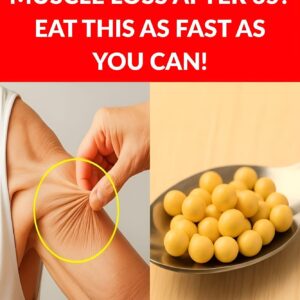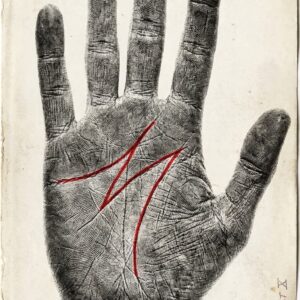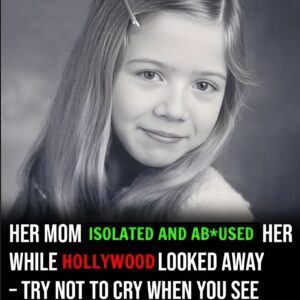From the moment her son was born, Patricia felt an overwhelming sense of love and pride.
Like most new mothers, she began capturing every little milestone with photos — his tiny hands, his peaceful sleep, the sparkle in his eyes.
She eagerly shared these treasured memories with friends and family, expecting them to react with the same excitement and joy she felt.
But instead of warmth and compliments, Patricia was met with something unexpected — and deeply painful.
Some people reacted with confusion, others with awkward silence, and some with outright insensitivity.
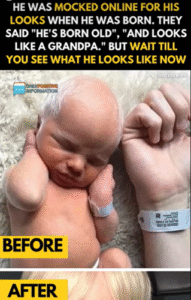
What should have been moments of joy turned into moments of concern and doubt. So what was it about her baby that provoked such a strong reaction? In 2012, Patricia gave birth to her second son, Redd. At first, everything seemed completely normal. Redd was born healthy and full of life. But a few weeks after his birth, subtle differences began to emerge. Patricia and her husband Dale noticed that Redd’s hair was not just light — it was pure white, almost glowing in the sunlight. In addition, his eyes constantly moved from side to side in an unusual, involuntary motion.
At first, Patricia thought nothing of it. She and Dale were both naturally blonde, and they assumed Redd had simply inherited a lighter version of their hair. But Dale, ever the researcher, grew curious about the eye movements. He spent time online searching for answers, and what he discovered left him stunned — Redd’s symptoms were consistent with albinism, a rare genetic condition that affects the production of melanin in the body.
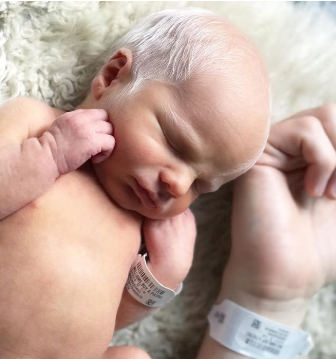
Patricia, unfamiliar with the term, was initially skeptical. But as they looked deeper into the symptoms — pale skin, white hair, light-sensitive eyes, and nystagmus (the constant eye movement) — they realized that Redd matched the description almost perfectly.
They decided to seek professional guidance. After consulting an optician and then a genetic specialist, their suspicions were confirmed: Redd had Oculocutaneous Albinism Type 1 (OCA1) — a condition that affects approximately 1 in 17,000 people around the world. This type of albinism is inherited and involves a complete or near-complete absence of melanin in the skin, hair, and eyes.
Although the diagnosis brought clarity, it also brought new fears.
Patricia recalled how the hospital staff had been fascinated by Redd’s appearance from the moment he was born. His hair was so white it almost looked silver under the lights, and his eyes were a vivid blue — sometimes appearing reddish under certain lighting due to the lack of pigment in the iris. Still, because Patricia and Dale both had light features, the striking appearance of their newborn didn’t alarm them at first.
But once the diagnosis was official, the weight of the reality began to settle in. Patricia and Dale worried about their son’s future — not just in terms of his health, but also the social challenges he might face. Albinism isn’t just a medical condition — it often comes with social stigma, bullying, and isolation.
Their fears weren’t unfounded.
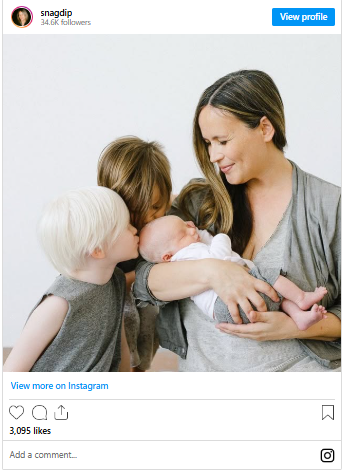
In February 2018, Patricia gave birth to her fourth child, another boy named Rockwell — who, like his brother Redd, was also born with albinism.
This time, the family was more prepared for the medical side of the condition. They already understood the need for visual support, sun protection, and regular checkups. But emotionally, nothing could have prepared them for what happened next.
Shortly after Rockwell was born, Patricia shared a few innocent photos of her beautiful baby online. But the photos were quickly stolen and misused by strangers on social media. Without permission, people began reposting images of Rockwell, turning his appearance into cruel memes and jokes.
Patricia and Dale were devastated. What was supposed to be a joyful moment had become a nightmare.
They tried, at first, to reach out to the people sharing the images, requesting them to remove the content. But the posts had already gone viral. They realized it was impossible to control the spread — and that the internet could be a very unkind place for those who look different.
At the same time, Redd was facing his own battles.
By the time he reached school age, he began to experience bullying and teasing from other children who didn’t understand his condition. He was called names, stared at, and excluded. Patricia explained how painful it was to watch her child go through something no child should have to face — rejection simply for looking different.
Thankfully, Redd wasn’t alone. His older brother, Gage, became a fierce protector and advocate for him. Gage stood up to bullies and made sure his brother knew he had someone in his corner. The bond between the siblings became stronger through the challenges they faced together.
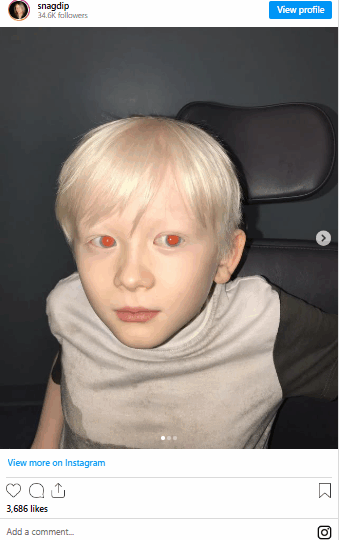
Instead of retreating, Patricia and Dale decided to take a stand.
They realized that the only way to fight the ignorance and cruelty was to educate. Patricia began speaking publicly about albinism, using her growing online platform to raise awareness. What started as a painful experience began to evolve into a powerful mission: to break down myths, challenge harmful stereotypes, and create a more inclusive world for people with albinism.
Patricia shared that most people had little to no accurate knowledge about albinism. Much of what the public knew came from outdated media portrayals or cultural misconceptions — often showing people with albinism as villains, mystical figures, or outcasts.
She began posting informative content online, answering questions, and sharing the day-to-day experiences of her children. She talked about the importance of sun protection, visual aids, and understanding the challenges of light sensitivity. But she also made sure to highlight her children’s joys, strengths, and unique beauty.
When Redd grew older, he underwent surgery for strabismus (crossed eyes), a common condition among children with albinism.
The operation was a success, and it made a noticeable improvement in his vision and confidence. Before surgery, they had considered patching one of his eyes, but ultimately chose surgery to avoid drawing more unwanted attention to his condition.
With his vision corrected, Redd transitioned from a school for visually impaired children to a regular public school. This marked a turning point — not just medically, but emotionally and socially. For the first time, he was able to blend in more easily with other children. His classmates became more accustomed to his appearance, and his ‘differences’ began to fade into the background.
Today, Redd is thriving. Although he still needs to wear a hat, sunglasses, and high-SPF sunscreen when outdoors, he lives a full and active life just like any other child. He enjoys playing, learning, and spending time with his siblings. His condition doesn’t define him — it’s simply one part of who he is.
Rockwell, too, is growing up with love, support, and strength. Thanks to the lessons learned from raising Redd, his parents are better equipped than ever to guide him through life with confidence.
The Williams family has faced more than their fair share of challenges — but they’ve chosen to meet them with courage, love, and purpose.
They’ve turned ignorance into education, cruelty into advocacy, and isolation into community. Through their story, they’ve touched countless lives and helped open people’s eyes to the beauty of difference. What began as an unexpected diagnosis has become a powerful journey of acceptance and empowerment. And today, Patricia continues to share her family’s experience — not just for her sons, but for every child who’s ever felt different, and for every parent walking a similar path.
